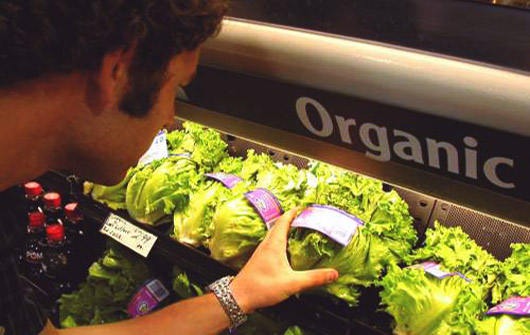It’s not surprising to learn that toxins are everywhere. The air we breathe, the food we eat. Open your kitchen, bathroom and laundry cupboards and you’ll find plenty of offenders there as well. Most of our exposure happens unknowingly and seems to be just part and parcel of life’s daily routine.
From a fertility perspective it’s difficult to quantify just how environmental toxins exactly impact our fertility, as it’s only now, that researchers are truly discovering how our daily “dose” impacts our health and well-being Pesticides, plastics, additives, preservatives, fatty foods, alcohol and yes, even caffeine are just some toxins our food supply exposes us to and places extra burden on our body.
Within this article I plan to share information on ways to help reduce exposure to toxins in our food supply. But before I do I feel it is important to express that whilst no pre-conception plan is complete without taking environmental factors into consideration, we all still have to live in the real world. The key is to make gradual changes that are realistic and sustainable for you.
Reducing toxin exposure from our food supply can be achieved by including nutrient rich food, preferably of organic origin into your life. From a nutritional standpoint organic food is regarded as more optimal but it’s also more expensive, if you don’t factor in the health and environmental damage done by chemicals. The good news is that it’s not necessary to attain organic perfection to improve health and well-being and that you can significantly reduce the amount of toxins you expose yourself to by buying organic versions of the most heavily contaminated fruits and vegetables. Take a peek below to work out which produce is worth paying the extra pennies for organically:
- Most Contaminated Fruits: peaches, berries, apples, nectarines, pears, cherries and grapes
- Most Contaminated Vegetables: spinach, celery, potatoes, green beans, squash and capsicum
- Least Contaminated Fruit: pineapples, mangoes, bananas, kiwis and papayas
- Least Contaminated Vegetables: sweet corn, avocado, cauliflower, asparagus, onions, peas and brocolli
Even still if buying organically is totally out of your reach – don’t despair. There are other options to consider and well worth the effort for instance:
- Buy produce that is as fresh as possible. The longer a fruit or vegetable spends on a truck or on the shelf of a refrigerator whether organic or not means nutrients will be lost. Food picked fresh and eaten not long after will benefit your health incredibly.
- Purchase a fruit and vegetable wash available at most health food stores or better still make your own by adding a few teaspoons of white vinegar to a bowl of water.
- Peel fruit and vegetables to substantially reduce toxin exposure.
- Buy locally and eat seasonally
What’s great amongst many other things about living on the Sunshine Coast is that our climate affords access to a fantastic array of locally produced and organic/spray free grown produce all year round. It’s available at a number of retail outlets, weekly farmers markets and in some cases the farm door. Buying food locally means toxin exposure is likely to be reduced due to less miles travelled, and the nutrient profile better thanks to food being fresher. It’s also a more economical option and is a positive way to support the local community and the environment.
Tens of thousands of chemicals are used in the Western world every single day, many of which will never be studied with regards to their exact effects on health and well-being It’s easy to feel overwhelmed by the do’s and don’ts associated with optimizing fertility however, more often than not, taking a commonsense approach and keeping perspective will be enough to reduce the risk of exposure.
Please feel free to email us any questions you may have with regards to the contents within. We would be more than happy to assist you.

